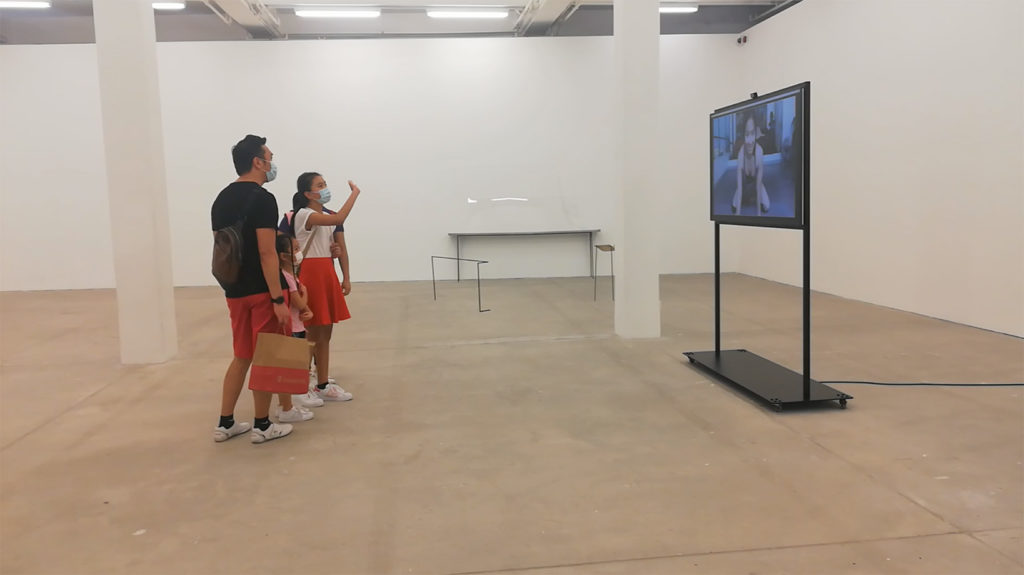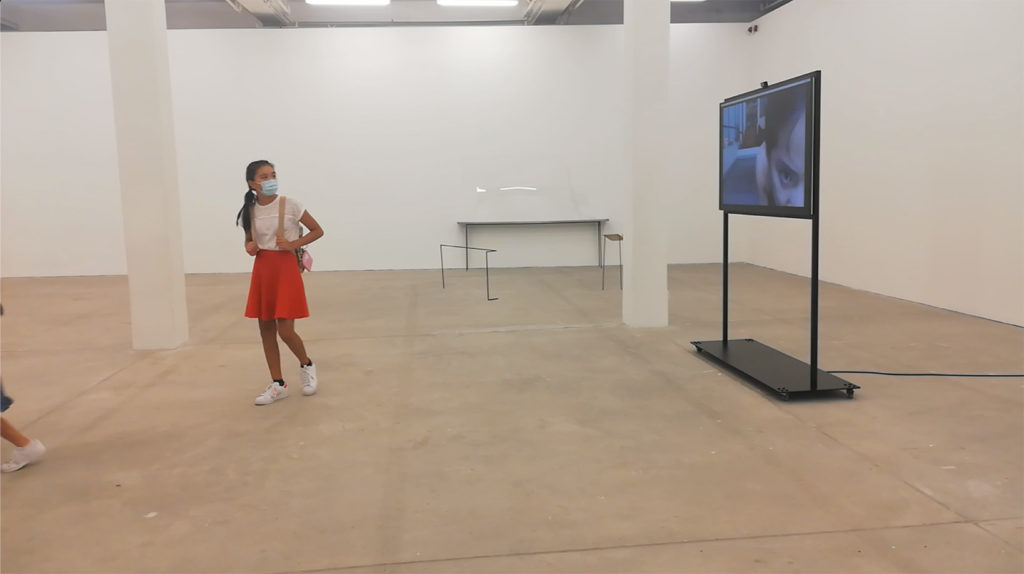【by Anjeline de Dios, Dec. 2021】
As a kid in late 1990s Manila, spending my after-school hours watching Star Trek reruns, I used to harbor a whimsical what-if. What if my television could see me? What if I could talk to Spock (my crush) and he could talk to me, right from where we were? The seed of this conjecture was embedded in a fantasy of reciprocity: that I too was a character of some kind, vibrantly defined and agentic in a narrative beyond my consciousness, beheld by some distant and intimate other. This fantasy felt logical, supported by a vague conviction of only one Now, containing a multitude of spatialities, within which unlikely convergences could occur.
An exercise in wish fulfillment if there ever was one. Though we might associate livestreaming with the commonplace practice of transmitting real-time entertainment and commentary to a faceless audience, we are all livestreamers now,[1] reciprocally and simultaneously broadcasting our presence as we gather in manifold digital spaces that approximate the parameters of our real-life engagements.
I invite you to list, as exhaustively as you can, everything you have managed and needed to do on Zoom or other video platforms in the last two years. Here is a short list of mine:
Teaching undergraduate courses
Facilitating conferences
Giving and receiving oracular readings
Singing for funerals
Going to birthday parties for old and young people
Taking voice lessons
Sitting in meditation groups
Going on dates
Negotiating real estate deals
Attending plays
Eating at family dinners
Dancing at parties and jams
How many times have you and I ended these livestreams with a wish to do this in person, implying this “pivot” is temporary and reversible? But by then, what’s already transpired is the event itself, not its substitute: in the sense of fresh grief, say, or a moment of resonant encounter with someone we will probably never see in person. Nagkatagpo nang walang tagpuan, I might say in Tagalog: To meet without a meeting place.


A family of visitors engages with Eisa Jocson during the livestreamed durational piece Zoo at Tai Kwun Contemporary, Hong Kong, 27 September 2020. Video stills by author.
We might have made do with livestreaming as a stopgap measure for really being together. But even as we tentatively attempt physicality again, it is clear that we now live through streaming as a permanent modality of being-together, with its own affordances and limitations. Our streamed communion, striated with isolation and intimacy, feels uncanny. Rather than lapse into nostalgic denialism, is there a way to trouble our normativity of the real and begin the long work of attuning to this strangeness?
I think of Eisa Jocson’s Zoo (2020). Over three months of thrice-weekly, five-hour shifts, dancers from Hong Kong and the Philippines performed live an amalgamation of creatures and characters in captivity, both burdened with the task of capturing human attention. Though conceptualized in in 2019, the piece inevitably became a model of the enforced hybridity that defined the first year of the pandemic. The Philippine contingent, unable to travel overseas because of the extended lockdown and bureaucratic hurdles with obtaining exit visas, livestreamed from their rooms in Manila into a Zoom screen installed at Tai Kwun Contemporary. On the other side of the room, their Hong Kong counterparts placed themselves in a glass-walled enclosure, echoing the museum’s previous incarnation as a colonial prison.
As the title suggests, Jocson’s choreographyprobed the ambivalent co-presencing of the viewer and the performer-as-exhibitionary-object by way of a series of movements meant to evoke confinement-induced psychosis. I watched as the performers yowled, yawned, and paced in the expected gestures of bestiality, but also jumped and pumped in an eerie, sometimes hilarious mimicry of compulsive human exercise. From time to time they blurted spasmodic monologues of manic cheer and wonderment, splicing the scripted labors of Disney fairytale princesses and supermarket attendants with off-the-cuff visitor interactions.
What felt remarkable in the piece’s naked structuration of liveness was the vulnerability induced by its injunction of the gaze. When Jocson pressed her face to her camera I counted the beads of sweat on her brow; as I distanced myself from the monitor, she saw me situated in the abstracted tableau of the exhibition space, a figure caught on surveillance tape. “Goodbye,” she chirped when I stepped up to the screen to wave farewell. A wave of shyness came over me, carrying me back to the hours of sitting by my father’s hospital bed. I felt helpless: my physical proximity to the trapped body materialized a distance I could not cross. I felt tender: the tensile moment of our togetherness had to be endured. Stepping out of frame felt like an exhale, both exhilarating and emptying. When I fantasized about being with Spock through my television screen I did not imagine it would feel this full of love, this lonely.
As a durational piece, Zoo also exposes the strange exhaustion of mediated life—the constricted and interminable intimacy of mutual beholding. Of course we would deflect the discomfiture of our live calls by swirling around in eddies of private distraction: we look out of (or into) other windows, or mute the monotone of the other’s voice. We fake the visage of politesse and participation. But even this is just an extension, after all, of the countless moments we inwardly check out of physical space shared with other bodies—a packed train, a long line, a meeting place without a meeting. May tagpuan, walang pagtatagpo.
Does livestream disembody our experience of communion? Or does it simply heighten the always-already fragmented state of our presence? Whenever I switch off the screen, it takes me a moment to feel my body again.
AUTHOR
Anjeline de Dios, Dark Matter Labs; anjeline.net
NOTES
[1] Thanks to Kali Handelman for making this observation.